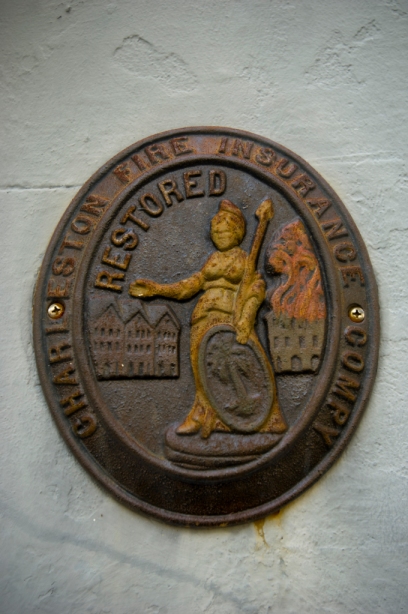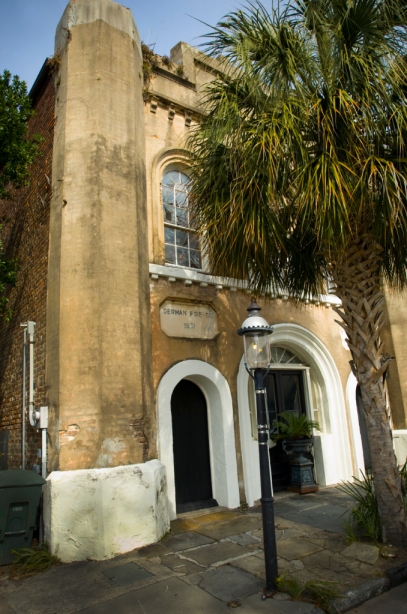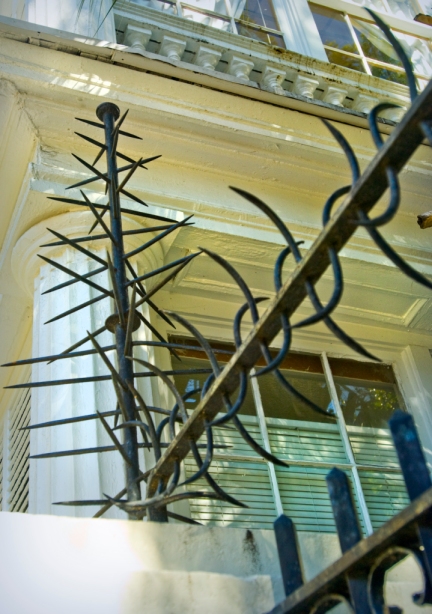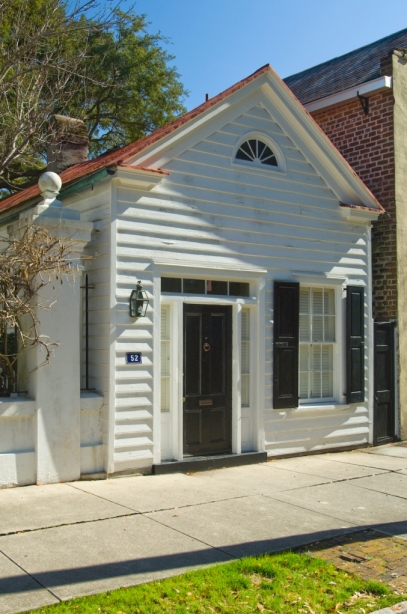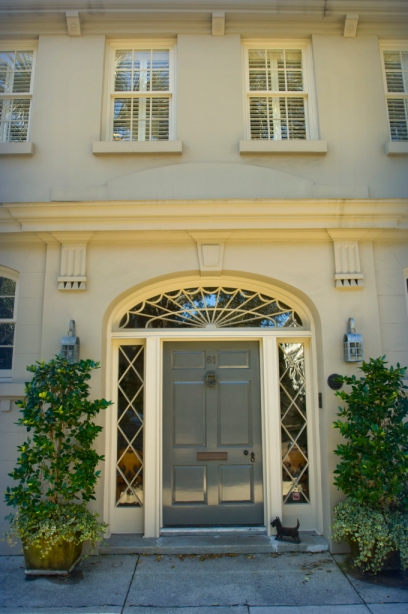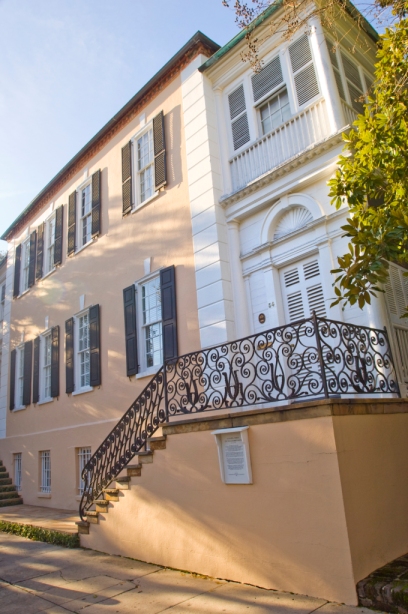The Walking Tour has been great fun and I’ve bearly scratched the surface. The offical guide book has over 100 stops and even that doesn’t touch them all. I’ll wrap this up with just a few points of interest.
In the 1700’s fire fighting was a neighborhood affair and homeowners were required by law to have buckets and ladders on hand at all times. Looters used fires as an opportunity to burglarize houses, but punishment was severe. If apprehended looters were to be ” pilloried, have their ears cut off and forfeit four times the value of the stolen items”. In 1736, America’s first Fire Insurance Company was founded in Charleston. Each company had it’s own men and equipment and were obligated to fight fires in houses bearing their insignia, similar to the one above.
The 19th century gave rise to volunteer fire stations like this one, the German Fire Company, at 8 Chalmers Street. They tended to be ethnic in nature, as were the neighborhoods. We tend to forget that the idea of America as an ethic melting pot was a very real thing during Colonial times. On any given day in Charleston one might hear English, French, Spanish, Dutch, Swedish, German and Yiddish, as well as many African and Caribbean dialects. A prime qualification for postage service was being multilingual.
Built in 1760, this was the home of Lord William Campbell, the last Royal Governor of Carolina. In 1775, as angry mobs took to the street and were “tar & feathering” Tories, Campbell fled the city by way of a small boat in the creek that ran behind the house.
This house was the headquarters of General P. G. T. Beauregard, commander of Charleston’s defenses. Beauregard was famous for his dashing Creole hair which abruptly turned gray during the siege. It is rumored that it was not stress that effected his black hair but instead the blockade’s disruption of the import of French hair dye.
The curved spikes along the top of this wrought iron fence were added as a defensive measure after the Denmark Vesey Revolt of 1822. Vesey, a free black carpenter, organized a widespread slave revolt, but was informed on at the last minute. He and 34 others were hung near the Battery.
The world famous Conchologist, Dr. Edmund Ravenel, built this as an office in the mid-1800s. An acquaintance of Edgar Allen Poe, Ravenel was the model for William Legrand in Poe’s “The Gold Bug”.
According to the census of 1790, 34 slaves lived at 59 Meeting Street, more then any other downtown residence, so it is ironic that Edward Ball was living here when he wrote “Slaves In The Family”. The 1998 National Book Award winner for non-fiction. Of all slaves granted freedom, when it was relatively easy do so, about a third were mulatto children and about three fourths of adult slaves granted freedom were the women who had given birth to them.
“The mulattoes one sees in every family exactly resemble the white children. and every lady tells you who is the father of all the mulatto children in everybody’s household. but those in her own she seems to think fell from the clouds, or pretends to think so”. Mary Boykin Chesnut
U.S. District Judge Julius Waties Waring was living here in 1947 when he ruled to let blacks vote in the state’s Democratic primary and in 1950 when he voted to integrate the South Carolina schools. Both cases were heard at the Post Office building just up the street, with the NAACP being represented by Thurgood Marshall. Waring was ostracized by the Charleston elite and harassed by the local populace. After a cross was burned in front of the house he was forced to move north.
This was the main house of the Rhettsbury Plantation, just north of the walled city, and the home of Col. William Rhett, best remembered for his pursuit and capture of the infamous Stede Bonner, “the Gentleman Pirate”. Bonner and his rowdy crew were hung and buried next to the Exchange Building at the Battery.
And finally, room #122 in the Fort Sumter House is the place where, on February , 1942, then Ensign John F. Kennedy and suspected Nazi spy, Inga Arvad were recorded by the FBI doing the Buddy Bump. Unbeknown to the star-crossed lovers, Inga was suspected by the FBI of being a Nazi spy and was the subject of close surveilliance under the personal supervision of Director J. Edgar Hoover.

